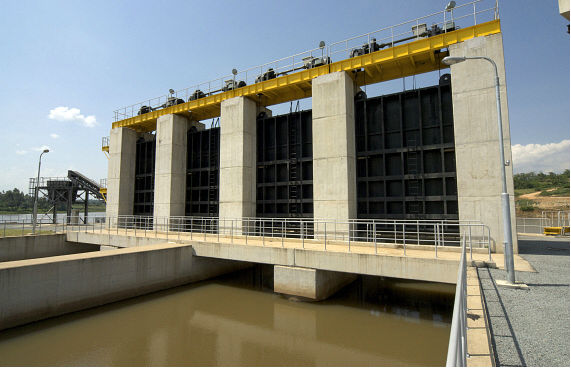Send to a friend
The details you provide on this page will not be used to send unsolicited email, and will not be sold to a 3rd party. See privacy policy.
[NAIROBI] Large dams planned for completion by 2030 in Eastern and Southern Africa could increase the risk of disrupting electricity supplies because they will be concetrated in areas with similar rainfall patterns and vulnerable to droughts, according to a study.
Published in the journal Nature Energy last month (8 December), the study highlights potential climate risks and shows that hydropower covers a significant, rapidly expanding amount of electricity production in the two sub-regions.
“By 2030, 70 per cent and 59 per cent of total hydropower capacity will be located in one cluster of rainfall variability in Eastern and Southern Africa, respectively,” the researchers note.
Declan Conway, the study’s lead author and a research fellow at the UK-based Grantham Research Institute, London School of Economics, says that hydropower contributes to 90 per cent of national electricity generation in Ethiopia, Malawi, Mozambique, Namibia and Zambia. He cited several new projects commissioned over the last decade, including the Grand Ethiopian Renaissance Dam on the Blue Nile.
“We focused on hydropower because it is such a major component of electricity-generating capacity in many countries of Sub-Saharan Africa and because we knew anecdotally of several droughts that had disrupted electricity supply with major social and economic consequences,” adds Conway.
Credit: Nature Energy
The researchers used rainfall data based on measurements with rain gauges, and supplemented the findings with estimates from satellite data.
“We used a statistical technique called cluster analysis to group areas with similar rainfall variability for the period 1956 to 2011,” explains Conway. “We found three different rainfall patterns (clusters) in Eastern Africa and seven in Southern Africa.”
They found that the large dams currently planned will depend on areas with similar rainfall patterns — making them vulnerable to the same dry periods and droughts. This could lead to electricity shortages and power outages, according to the study, undermining the electricity security from hydropower on which Africa relies heavily.
“Guidelines to incorporate climate risks into infrastructure planning are now emerging,” Conway tells SciDev.Net. “[When planning for dams], decision-makers should consider the location of dams and rainfall patterns, and how changes in rainfall could affect hydropower supply.”
Sub-Saharan Africa, according to Conway, has seen renewed interest in dams for hydro-power after a hiatus in the 1980s and 1990s. “Many countries have been able to self-finance projects”, he says, citing funding and expertise from China as an additional factor.
But the knock-on effects of electricity disruption are wide-ranging and could have implications for services, businesses and economic activity, according to the study. And although some regional power-sharing mechanisms are in place — so-called ‘Power Pools’ that provide buffer variations in river discharge or reservoir storage through electricity trading — energy trade is limited in the two regions.
“We focused on hydropower because it is such a major component of electricity-generating capacity in many countries of Sub-Saharan Africa.”
Declan Conway
The researchers add that these power-sharing systems also face challenges with infrastructure and politics. Electricity utilities in many African countries suffer from underinvestment, inefficiency due to the failure of state monopolies, low ‘technological dynamism’ and poor service provision.
Elikana Kalumanga, a natural resource management expert at the Institute of Resource Assessment at Tanzania’s University of Dar-es-Salaam, says most hydropower plants in Eastern and Southern Africa are largely rain-fed and thus mainly depend on forested mountains.
“Persistent and extreme droughts are already posing a challenge to provision of adequate water for production of hydroelectric power and thus reliable supply of electricity,” explains Kalumanga. “Multi-stakeholder engagement and collaborative processes are necessary to safeguard the water catchment areas and sustain [the] water flows required to produce electricity from various hydroelectric power plants.”
He calls for an assessment of how planned hydroelectric dams could contribute to the Sustainable Development Goals while sustaining the water used for operating them.
This piece was produced by SciDev.Net’s Sub-Saharan Africa English desk.















